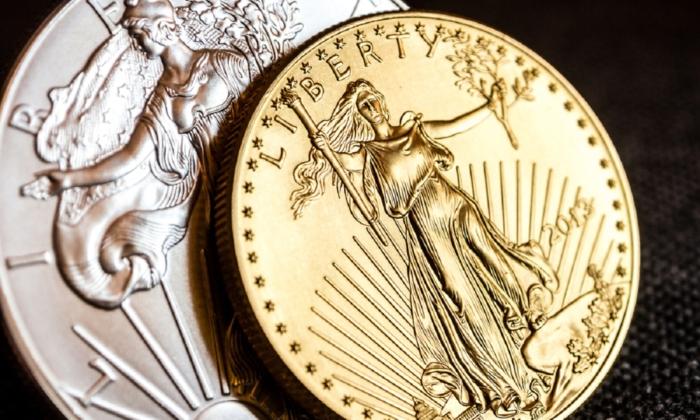With inflation a growing concern, many investors are looking for assets that will let them hedge against inflation. You can seek inflation protection from several investment strategies like gold, real estate, international stocks, bank loans, and more.
At the Oxford Gold Group, we believe gold is an excellent investment option for combatting times of high inflation. We know how hard you’ve worked to earn money throughout your life, so you don’t want it to lose value in a bank account. Below, we will discuss everything you need to know about gold as an inflation hedge to make an informed decision with your money.
What Is Inflation Hedging?
Inflation happens when a currency’s value goes down, causing the price of goods to go up. For example, a couple of decades ago, you could go to the store and buy a gallon of milk for about $2, whereas today, it would cost $4, depending on where you live.As inflation rises, items become increasingly expensive, and the money you earned years ago becomes less valuable. Luckily, you can combat inflation with hedging techniques. Inflation hedging involves investing in items that typically hold their value better than paper money.
You can secure your money’s value in economic downturns by storing it in assets that won’t depreciate as quickly as cash.
Is Gold Still a Good Inflation Hedge Today?
Gold is still an inflation hedge today, though whether or not it is the best remains debatable. Gold and inflation do not always correlate directly, and the price of gold frequently fluctuates, meaning that this hedging technique is not an exact science. In the last three months, one troy ounce of gold lost $94.05 in value, though, in the previous 50 years, it’s gained $1,786.40 in value (as of the time of this writing).Gold is a better investment strategy for long-term payouts than short-term. If you can leave your funds in precious metal investment for long periods, you might see enough rewards to cover the period’s inflation.
How Did Gold Become an Inflation Hedge?
Gold as an inflation hedge began with governments attempting to protect their economies. In 1879, the United States introduced a gold standard that began backing the U.S. dollar with actual gold to combat inflation.In 1971, President Nixon decided to end the gold standard to gain better control over gold-to-dollar conversions and improve inflation. While this attempt did curb the issue for a short period, it did not cure it.
Today, investors look back on these government actions as an informational roadmap on how we can proceed through times of inflation by using gold.
Gold’s Performance Over Time Against Inflation
Gold has proven to be a “safe haven” for global investors during economic downturns. A history of success, consistently rising buy-in prices, low risks of price crashes, and many investment avenues make it a no-brainer for many investors who wish to hedge against inflation.One study from Duke University found that gold mainly performed well at combating inflation when the investment period lasted for over a century. Shorter-term investments show larger fluctuations that could leave you in the positive or the negative, depending on your timing. If you invest now and leave the funds until you retire, you have a better shot at increased rewards.
Other Inflation Hedges Besides Gold
Gold is not the only inflation hedge—there are many other options with their own pros and cons to consider. Some options include:- Other precious metals: Like gold, you can also invest in silver, platinum, and other precious metals. Most investors choose gold over these alternatives as a more dependable and stable choice.
- Real estate: Real estate notoriously appreciates and fights inflation quite well, making it an excellent investment opportunity if you have the funds and time. Real estate investments involve much larger risks, higher upfront costs, and more time and effort to manage.
- International investments: When the U.S. economy experiences severe inflation, you can consider investing overseas with foreign economies using mutual funds or exchange-traded funds. You can start at lower costs, though you should thoroughly research whichever country you choose.
- Treasury bonds: Treasury inflation-protected securities (TIPS) are bonds that link with the consumer price index, increasing in value to match inflation rates. TIPS include interest rates that can be problematic if you wish to withdraw your money too early.
Will Gold Stay an Inflation Hedge in the Future?
Gold will likely stay as an inflation hedge in the future, though it might gain and lose popularity as investors consider newer options. Gold historically proves itself as a long-term strategy for life-long investments. People who want to hedge inflation in the shorter term might say that gold is out, though we predict it will continue to prove its worth as a long-term strategy.The Oxford Gold Group helps investors protect and grow their wealth by purchasing physical gold and silver for their IRAs and for home delivery as effortlessly and securely as buying bonds or stocks. That’s why investors have turned to the security of gold and silver and the Oxford Gold Group. Call 833-600-GOLD or visit OxfordGoldGroup.com to receive a complimentary copy of “Your Precious Metals Investment Guide.”
Third-party advertisements and links to other sites where goods or services are advertised aren’t endorsements or recommendations by The Epoch Times of the third-party sites, goods, or services. The Epoch Times takes no responsibility for the content of the ads, promises made, or the quality/reliability of the products or services offered in all advertisements.





